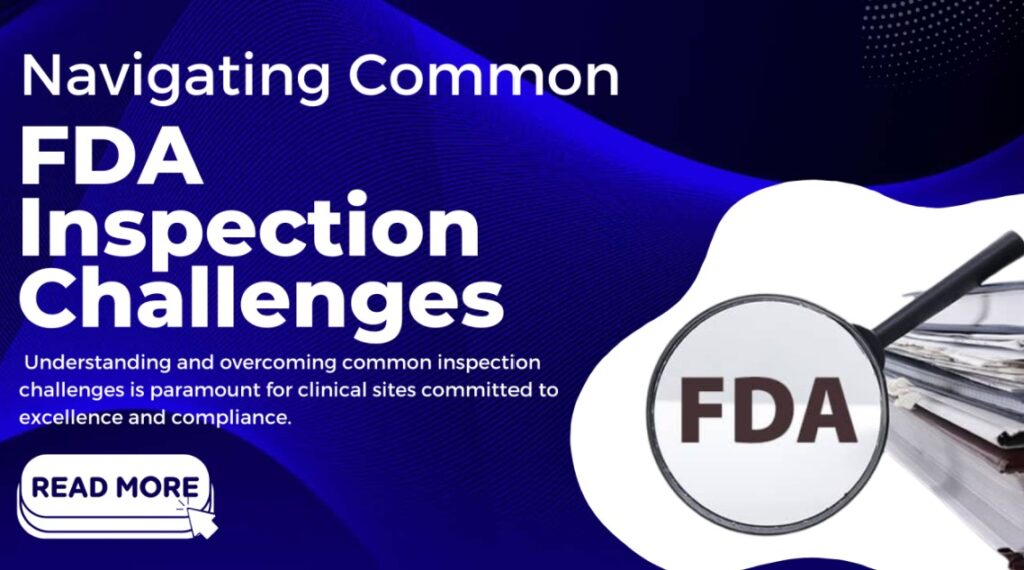FDA inspections are a critical aspect of clinical research, ensuring adherence to GCP standards and safeguarding participant well-being. Our comprehensive guide is designed to empower your clinical site to navigate these inspections successfully, transforming potential challenges into opportunities for enhancement and compliance.
Anticipating and Addressing Frequent Pitfalls
Identifying and addressing common pitfalls is a key step in preparing for an FDA inspection. Frequent issues include inadequate informed consent documentation, non-adherence to protocols, and inaccurate record-keeping. By proactively tackling these issues, your site can demonstrate a strong commitment to regulatory compliance and patient safety. Regular internal audits and pre-inspection checks are effective strategies for mitigating these risks before an inspection occurs.
Empowering Your Team with Knowledge and Resources
The readiness of your team is crucial to the success of an FDA inspection. Providing regular training on GCP guidelines and FDA-specific requirements equips your staff with essential knowledge. Establishing clear, documented protocols for maintaining and documenting compliance is also critical. Investing in continuous education and resources fosters a culture where quality and compliance are paramount.
Engaging in Continuous Improvement
Viewing FDA inspections as opportunities for improvement rather than merely evaluative exercises can significantly change your team’s approach to compliance. Implementing a systematic review process post-inspection allows your team to address any identified deficiencies and continuously refine and enhance operational practices. This ongoing improvement ensures that your site is always prepared for inspections.
Leveraging Expert Guidance
For those looking to deepen their understanding and enhance their inspection readiness, the course “Preparing for FDA GCP Inspections – Best Practices for Clinical Sites” provides comprehensive insights into preparing for and navigating through FDA inspections. This course offers practical, actionable strategies that can be implemented to enhance your site’s preparedness.
Conclusion
Maintaining compliance and readiness for FDA inspections is achievable with the right strategies, continuous improvement, and access to expert guidance. By embracing these practices, your clinical site can approach inspections with confidence and demonstrate a strong commitment to research integrity and participant safety.
For a more detailed exploration of best practices in FDA inspection readiness, consider enrolling in “Preparing for FDA GCP Inspections – Best Practices for Clinical Sites.” This course is designed to provide you with the knowledge and tools needed to excel in the face of regulatory scrutiny. Visit our website and enroll in the course today. Ensure your clinical site exceeds the standards set by regulatory authorities.







